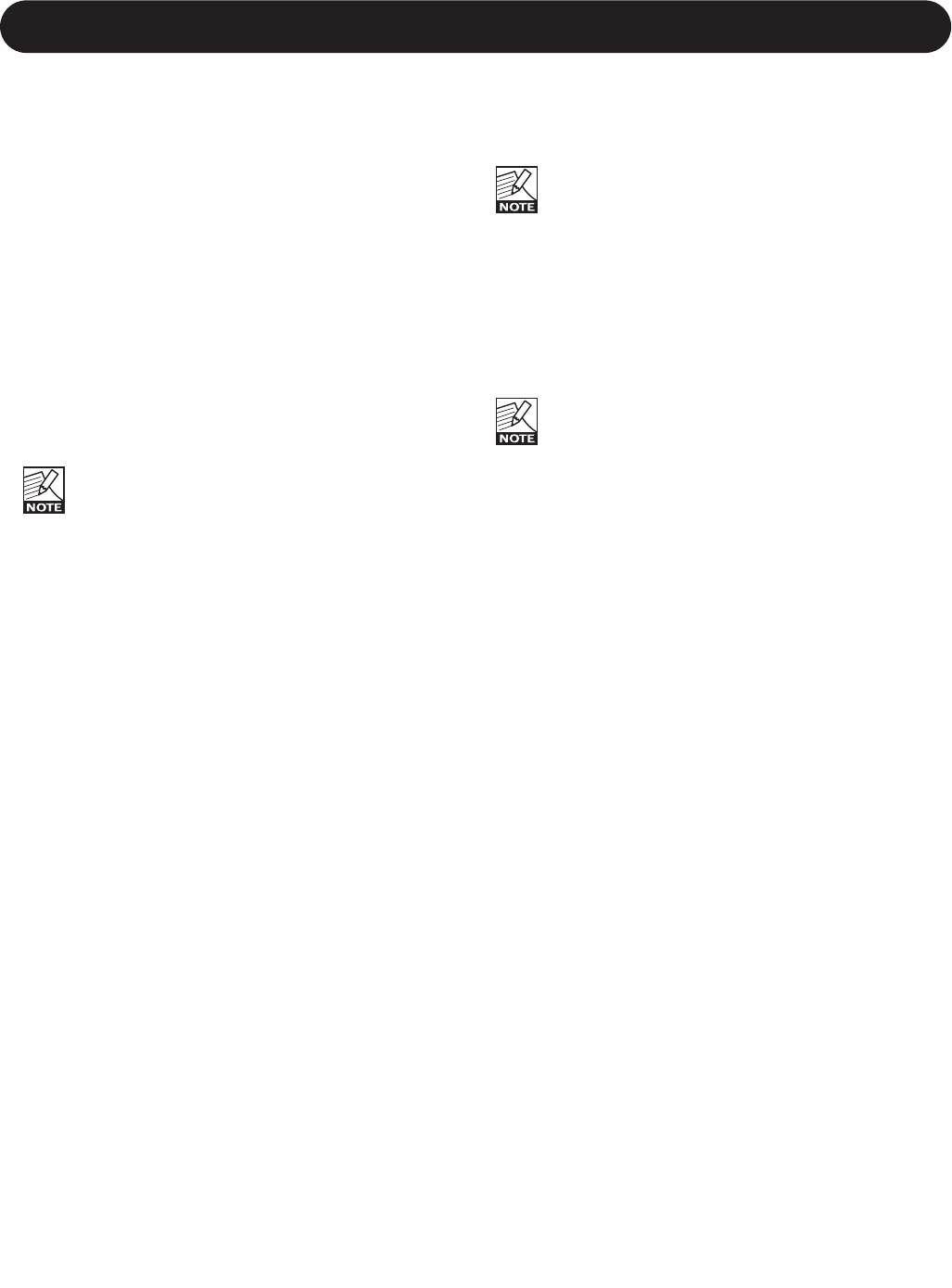
12
SETTING UP & TUNING IN
Setting the Cross-over Frequency
The Cross-over frequency can be set to four positions: 60,
80, 100Hz and Flat. The roll-off slope is 24dB per octave.
In most cases, selecting cross-over frequencies is done
through the bass-management system of your processor or
receiver. In this case, use the "Flat" position. Refer to the
instruction manual of the processor or receiver how to set
cross-over frequency.
• Press the button for the desired position. When pressing
the button, ensure that the command from the remote
control is received (the Power Status LED; No. 2 in fig. 7
blinks).
Check the owner's manual of the other speakers in the
system if a specific frequency is recommended. Please
refer to the chapter "Finding the optimal settings" for more
information.
• Together with the other settings, the Cross-over
frequency can be stored in one of the 4 presets.
Refer to section "Storing and recalling Presets" in
this chapter. Together with the other settings
Volume and Phase we recommend that, once
found, you store the correct cross-over frequency
into one of the presets.
• The Cross-over frequency control is disabled
when the subwoofer is set to "Slave" mode. Refer
also to section "Master and Slave Mode" in this
chapter.
Selecting EXT On or Off
EXT stands for Extension, in this case Low Frequency
Extension. Dynaudio subwoofers allow for deep and
accurate bass response even at high levels. In the EXT Off
mode, the very deepest bass will be mildly filtered; this will
allow the subwoofer to achieve even higher sound
pressure levels. Generally speaking, this setting is best
suited for movies and most music. Some movies and high
quality, audiophile recordings can contain extreme low
frequencies. To experience these:
• Press the EXT On button (lower button in No. 4, fig. 6) to
switch Low Frequency extension on.
• Together with the other settings, the Low Frequency
Extension status can be stored in one of the 4 presets.
This way, you can program the EXT switched On as part
of a setting for "audiophile listening" and program EXT
Off as part of a setting for "cinema mode" for instance.
Refer to section "Storing and recalling Presets" in this
chapter.
• If you use a turntable, you will get the best results with
EXT switched off. Many vinyl records contain, and the
turntable itself will generate, very low frequencies
(rumble) which, with the subwoofers low frequencies
capabilities can otherwise prove distracting from enjoying
the music.
• The EXT mode is disabled when the subwoofer is set to
"Slave" mode. Refer also to section "Master and Slave
Mode" in this chapter.
• Loud volume levels over prolonged periods of time
can cause permanent damage to your hearing!
Setting Phase
The Phase setting of the subwoofer has been factory-set at
0° which in many cases will be the appropriate setting.
Press the 0°, 90°, 180° or 270° button (No. 5, fig. 6) to
select the desired phase setting.
• Together with the other settings, the Phase setting
can be stored in one of the 4 presets. Refer to
section "Storing and recalling Presets" in this
chapter. Together with the other settings, Volume
and Cross-over frequency, we recommend that,
once found, you store the correct phase setting
into one of the presets.
• The Phase selector is disabled when the
subwoofer is set to "Slave" mode. Refer also to
section "Master and Slave Mode" in this chapter.
Storing and recalling presets
With four presets available you have the flexibility of
recalling different sets of subwoofer settings, depending on
what suits the occasion best. For instance, you may store
the settings best suited for classical music setting under
Preset A, program Preset B to have the best settings for
action movies and program Preset C for late-night listening,
etc.
The presets are also an excellent tool for recalling different
settings when experimenting with either location or settings
of the subwoofer.
Once you have stored all presets, you can choose to block
access to storing, so that presets can not be over-written
by mistake.
Each preset stores settings for Volume Level, Cross-over
frequency, LF Extension and Phase.
To store a preset:
• Ensure that Preset programming hasn't been blocked:
The Preset/Settings switch on the subwoofers back panel
(No. 8 in fig. 2) must be in the "Store" position.
• Set all parameters (Volume Level, Cross-over frequency,
LF Extension and Phase) to your liking.
• Press and hold the desired Preset A, B, C or D button
(No. 6 in fig. 6) for 3 seconds. Ensure that the subwoofer
receives the commands from the remote control without
interruption.
• The Status LED (No. 2 in fig. 7) will blink 3 times to
confirm the preset has been stored. Any previously


















